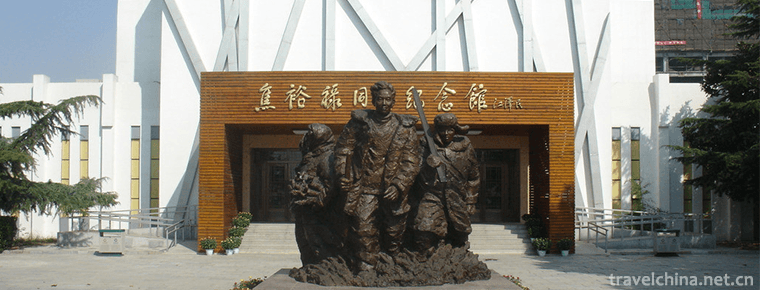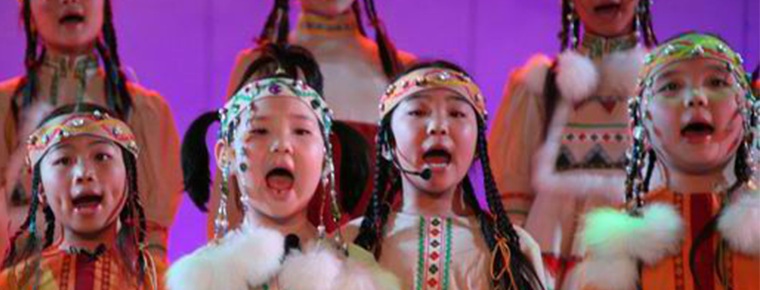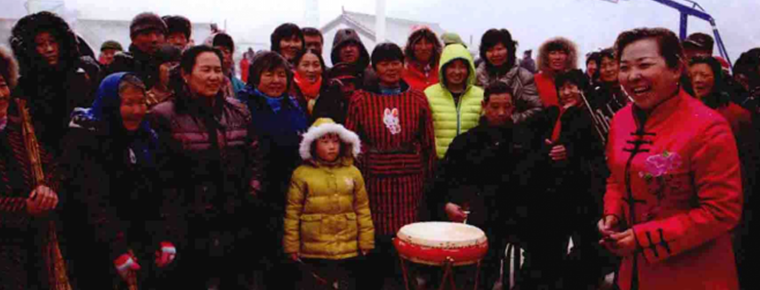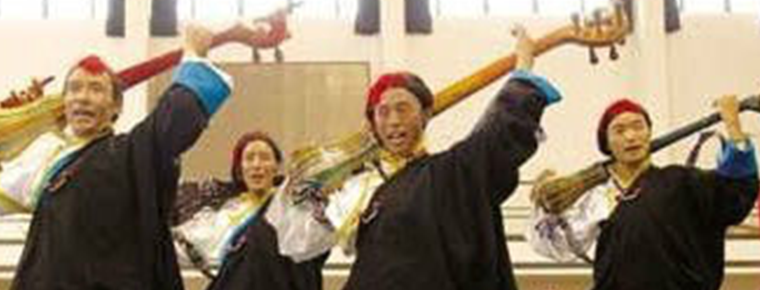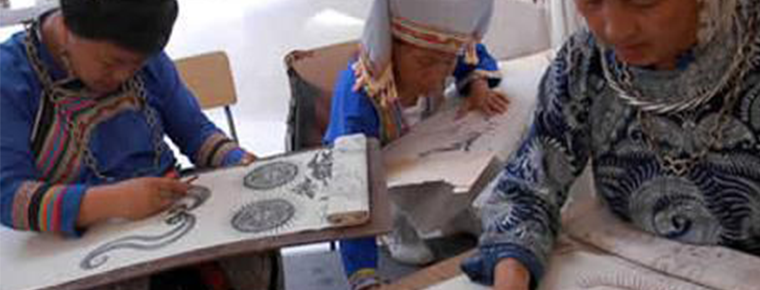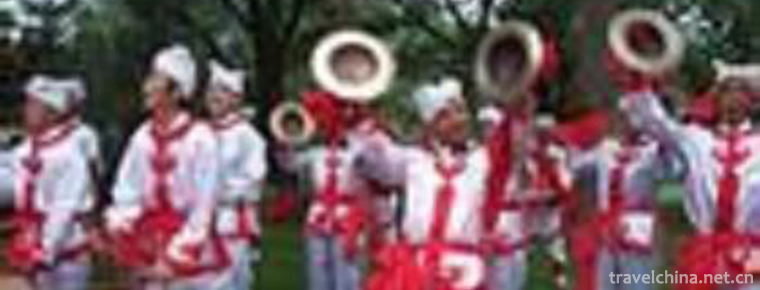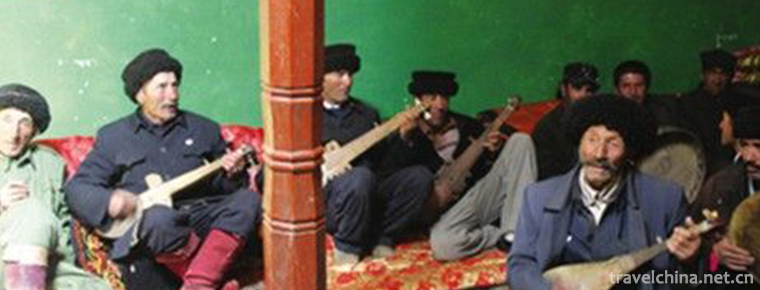Boxwood carving
Boxwood carving
Boxwood carving is one of the traditional folk carving arts in Zhejiang Province. It uses boxwood as carving material and uses the natural form of boxwood, which is smooth, delicate in texture and solemn in color.
The earliest "Li Tiejiao" image from Yuan Dynasty to Zhengzheng two years was preserved in Beijing Palace Museum. During the Ming and Qing Dynasties, poplar wood carving has formed an independent artistic style of handicraft, and it is loved by people for its close to the society and vivid shape and portrayal of figures.
Most of its contents and themes show the characters in Chinese folk myths and legends, such as Baxian, Shouxing, Guan Gong, Maitreya Buddha, Guanyin and so on.
In June 2006, it was listed in the first national intangible cultural heritage list.
historical origin
Boxwood carving is named for the wood carved from boxwood. Boxwood grows slowly, with a diameter of only about 15 centimeters in forty or fifty years, so there are the saying that "it is difficult to grow boxwood in a thousand years" and "it is difficult to make a beat in a thousand years" (a beat in a musical instrument). Legend has it that the earliest folk artist who created statues of gods and Buddhas discovered by chance that the poplar wood was tough, smooth, fine-grained, yellow-like ivory, aging, simple and beautiful, moderate hardness, which is the best material for carving small round carvings.
Only in the late Qing Dynasty did the boxwood carving undergo a fundamental transformation from entertaining gods to pleasing people. At that time, the boxwood carving developed into desk crafts and became a fine art structure for decoration and appreciation. However, its regional cultural spirit is still permeated in the works. Opera figures and religious figures reflecting folk psychology are the main themes of expression, while works reflecting local customs and local customs have increased significantly. In 1915, Zhu Zichang, the most influential poplar woodcarving artist at that time, won the second prize at the Panama International Competition for his masterpiece hide-and-seek with strong local flavor. This work, with seven children playing hide-and-seek games in the open ground in front of the pavilion, expresses the childish taste of the countryside vividly and vividly. In 1929, Ye Furu, a famous artist of boxwood carving, wrote "The Herdsman Riding a Cow". Wood carving is a shepherd boy playing bamboo flute on the back of a cow. The old cow bows down and looks for food leisurely, reflecting a beautiful rural landscape. When creating these works, Zhu Zi often passed the age of perplexity, and Ye Furu was 60 years old. The hardship of daily life and the difficulty of creation and exploration did not dissipate their love for the countryside and their attachment to farming life. Their idyllic nature in their bones made them have a unique grasp and expression of the regional cultural spirit contained in the boxwood carvings. This also makes their works unique, unique, and can be recognized by experts in major competitions at home and abroad, winning awards repeatedly, making the unique local craft of poplar wood carving, from remote Yueqing, to the whole country, to the world.
The Invention of Yejia Poplar Wood Carving
According to legend, the boxwood carving was invented by Ye Chengrong, a cowherd doll in the late Qing Dynasty. Ye Chengrong is from Yueqing County, Zhejiang Province. One day, he was playing in a temple at the head of the village. He saw an old man sculpting a Buddha statue in the temple. He was attracted by the skill of the old man. He ran out of the temple, tied the cattle to a tree, dug up a sticky mud, sat at the entrance of the temple, and secretly learned to make sculptures. The old man is a well-known local folk artist. Seeing that Ye Chengrong is clever and eager to learn, he accepted him as an apprentice and taught him five kinds of skills such as round sculpture, clay sculpture, painting, gilding and relief. He made rapid progress and mastered this skill a year later. One day, Ye Chengrong was sculpting a statue of Buddha in Zixia Mountain of Baotai Mountain, Yueqing County. The Taoist in Guanzhong folded a poplar wood and asked him to carve a happy hairpin with it. In the process of carving, Ye Chengrong found that the wood of Populus boxwood is tough, fine texture, color and luster are all inferior to other wood, and it is a good material for carving. From then on, he began to carve with boxwood. In this way, the poplar wood carving in the Chinese folk art garden was born. Ye Chengrong's statue of Laojun Taishang, made around 20 years ago by Qingdaoguang, is the first handed down work of modern Wenzhou Huangyang woodcarving. Later, the art of Ye Jia was handed down from generation to generation.
The Rise of Boxwood Carving
Wenzhou boxwood carving was originated in Song and Yuan Dynasty, and was popular in Ming and Qing Dynasties. Yueqing wood carving has a complete range of categories. On the basis of adhering to the tradition and maintaining the original style and charm of Huangyang wood carving, it has made a bold breakthrough and brought forth new ideas. It has developed from "single carving" to "mosaic carving" and "group carving", from ordinary "round carving" to "chopping carving" and "root carving", with more exquisite skills and more perfect works.
The main origin of boxwood carving is Wenzhou and Yueqing in Zhejiang Province, Yueqing is the birthplace. Boxwood carvings originated from wooden carvings of small Buddha statues decorated with dragon lanterns on the popular "Dragon Lantern Festival" during the folk Lantern Festival. By the end of the Qing Dynasty, it had developed into a beautiful handicraft appreciator with fine features for people's desk decoration. Influenced by the styling style and lines of literati paintings in the late Qing Dynasty, the works have the characteristics of simple and mellow knife technique, fine and smooth, portrayal of figures with both physical and spiritual features, consideration of realistic structure and poetic painting. Most of the content themes show the characters in Chinese folk myths and legends, such as Baxian, Shouxing, Guan Gong, Maitreya Buddha, Guanyin and so on.
Because Wenzhou area is close to the mountain forest, artists can draw materials nearby, which has played a very convenient and promoting role in the development of poplar wood carving. Through continuous efforts and research of generations of artists, the excellent traditional style and traditional techniques of poplar wood carving have finally been formed, the most typical of which is hollow-out technique, which is the main body to form the vivid and exquisite image of poplar wood carving. In terms of techniques, it is most fully and perfectly embodied in such subjects as Astronomical Flowers, Red Silk Dance and Nazhao Naohai.
Wenzhou is situated on the Southeast coast, with convenient overseas transportation. Since the Yantai Treaty between China and Britain in 1876, Wenzhou has been opened as a trading port with active foreign trade. At that time, Wenzhou had set up an exporting arts and crafts acquisition business, which operated on a larger scale. Plus Yueqing, Yongjia, Xianju and other places are rich in poplar wood resources, and the conditions of supply, production and marketing are all available. A new situation of development of poplar wood carving has emerged. Gradually formed a group of artists engaged in the production of poplar wood carving and art schools represented by Zhu Zichang.
Development of Boxwood Carving
After the founding of the People's Republic of China, poplar woodcarving developed rapidly and excellent works emerged constantly. In inheriting and carrying forward the excellent traditional techniques, many kinds of circular carving techniques such as "mosaic carving", "group carving" and "mosaic carving" were created, and many excellent works were produced by skillfully combining relief and circular carving. In addition to Zhu Zichang, there are also several folk art families of Yueqing Huangyang wood carving industry, which are represented by Wang Fengzuo, Zheng Xiangkui, Ye Runzhou and other famous masters. Their works have different styles. Some of them focus on simplicity, simplicity and vividness. Some of them are more realistic in artistic techniques. Some of them are good at exquisite and exquisite carving techniques. As a new generation of wood carving artists, Gao Gongbo of Yueqing, while engaged in the creative research of poplar wood carving and tree root carving, also developed the brand-new wood carving technology of "chopping carving" of poplar, which is called "out of the embarrassment of poplar wood carving for hundreds of years".
However, in the old society, because of the predicament of "local puppet is like learning", "craftsmanship is like craftsmanship", "businessmen are trapped in wealth, and farmers are lazy in farming", boxwood carving, like other folk arts and crafts, has been severely damaged. The artists suffered from exploitation and oppression. Their livelihoods were difficult and they were displaced. There were really "thousands of painted faces without artemisia". On the eve of liberation, boxwood carving was on the verge of extinction.
After liberation, the woodcarving of poplar, like dead wood in spring, has gained vigorous development. In 1955, with the support of the Party and the government, nine unemployed artists in Yueqing County set up the Woodcarving Group of poplar. Soon after, it was expanded to an art sculpture factory. Many old artists returned to their original sculpture posts, and the number of new artists continued to expand. As a result, the number of artists engaged in boxwood sculpture in Yueqing County has increased from a few in the early liberation period to more than 800. In order to improve the artistic level of artists, the state often sends experienced professors and experts to the factory for guidance. Nineteen young artists from the factory have been reported to Beijing Central Academy of Arts and Crafts, Zhejiang Academy of Fine Arts and Zhejiang Institute of Arts and Crafts for further study. Yueqing Huangyang woodcarving artists continue to engage in technical research, breaking that kind of art on the basis of traditional techniques. Because of the old and backward ways of expression, from single three-dimensional garden carving to the garden carving skills of "jingcarving" and "group carving", in 1951 Yueqing Huangyang wood carving artists boldly created a large-scale overseas exhibition combining garden carving and relief, "orange harvest", and skillfully combined traditional relief and garden carving, and boldly reflected the harvest scene in the form of group images. They have broken through the old ways of expression, so that the famous Yueqing boxwood carving technology has taken a step forward. After smashing the Gang of Four, the factory set up creative groups, set up amateur art schools for workers, organized young sculptors to learn painting, sculpture and other skills, so that the technical strength of young artists has been rapidly improved, such as bamboo shoots springing up, referring to the Richeng Forest, many artists'works also participated in national and overseas exhibitions, and obtained good evaluation. The output value of wood sculpture in the factory is higher than when the factory was built. It has increased more than seventy times and sold its products to more than thirty countries and regions on five continents.
Inheritance significance
Yueqing Poplar Wood Carving fully demonstrates the wisdom of folk craftsmen, showing a variety of different styles in the course of historical development, such as Mingzhi Wood Carving Knife Round, concise and smooth; Qingzhi Wood Carving Knife Clear, smooth and round, and so on. The process of boxwood carving is complex, and the degree of delicacy and process requirements of each process are incomparable with other carvings, and can not be replaced by modern technology.
Nowadays, the material sources of Yueqing poplar wood carving are in crisis. At the same time, the loss of professionals is serious, new people are difficult to sustain, and individual workshops are scattered, which makes it difficult to have an impact. These conditions all affect the development of boxwood carving technology, and it is urgent for relevant parties to formulate plans to rescue and protect this characteristic technology.



-
Baiyang Lake
Baiyang Lake/Anxin Baiyangdian Scenic Area is located in the central part of Hebei Province. Anxin Baiyangdian is the largest inland lake in Hebei Province.
Views: 322 Time 2018-11-24 -
Jiao Yulu Memorial Park
Jiao Yulu Memorial Park (formerly Jiao Yulu Martyrs Cemetery) was built in February 1966. It is located on the old embankment of the Yellow River in the north of Lankao County, Kaifeng City.
Views: 153 Time 2019-01-22 -
Luxi County Alu Ancient Cave Scenic Area
The Alu Gudong Scenic Area is located in southeastern Yunnan Province, 2 kilometers west of Luxi County Town, Honghe Prefecture, Yunnan Province. "Alu ancient cave" is a Yi language,.
Views: 119 Time 2019-02-06 -
suyukou national forest park
Suyukou National Forest Park is located in Helan Mountain National Nature Reserve, 50 kilometers northwest of Yinchuan City, capital of Ningxia. It is a national 4A-level tourist attraction..
Views: 161 Time 2019-02-13 -
Oroqen Folk Songs
The Oroqen nationality mainly distributes in the Oroqen Autonomous Banner, Buteha Banner of Hulunbeier League, Inner Mongolia Autonomous Region and .
Views: 221 Time 2019-04-28 -
Jingdong drum
Jingdong Drum is a traditional rap art originating in Sanhe, Xianghe, Pinggu and Baodi of Hebei Province. The main instruments, in addition to the singer's left hand with copper plate,.
Views: 106 Time 2019-05-07 -
Lhasa nun Ma
Lhasa Bauma refers to a comprehensive music and dance art style which has a huge structure and contains poems, songs, dances and music, which is spread in Lhasa, Shigaze and Jiangzi of Tibet. .
Views: 297 Time 2019-05-10 -
Batik art
Miao batik technology, the traditional handicraft of Danzhai County, Guizhou Province, is one of the national intangible cultural heritage..
Views: 112 Time 2019-05-10 -
Miao Drum and Tibetan Festival
Guzang Festival, also known as the Drum Festival, is a ceremony for the Miao tribe to sacrifice the gods of their ancestors, commonly known as "eating drums and hiding". Guzang Festival exis.
Views: 128 Time 2019-06-05 -
Daoism in Northern Shaanxi
As one of the traditional folk songs in northern Shaanxi, Daoqing in northern Shaanxi was originally called "Qingjian Daoqing". Later, because "Longdong Daoqing" and "Shenchi .
Views: 162 Time 2019-06-13 -
Tajik Folk Songs
Tajik folk songs are very rich in content. The folk songs handed down to this day include folk songs reflecting ancient social life, customs and customs, eulogizing love and religious rituals. The mai.
Views: 167 Time 2019-06-17 -
Beijing Police College
Beijing Police College is a full-time general undergraduate college approved by the Ministry of Education, sponsored by the Beijing Municipal People's Government, administered by the Beijing Public Se.
Views: 114 Time 2019-09-06

